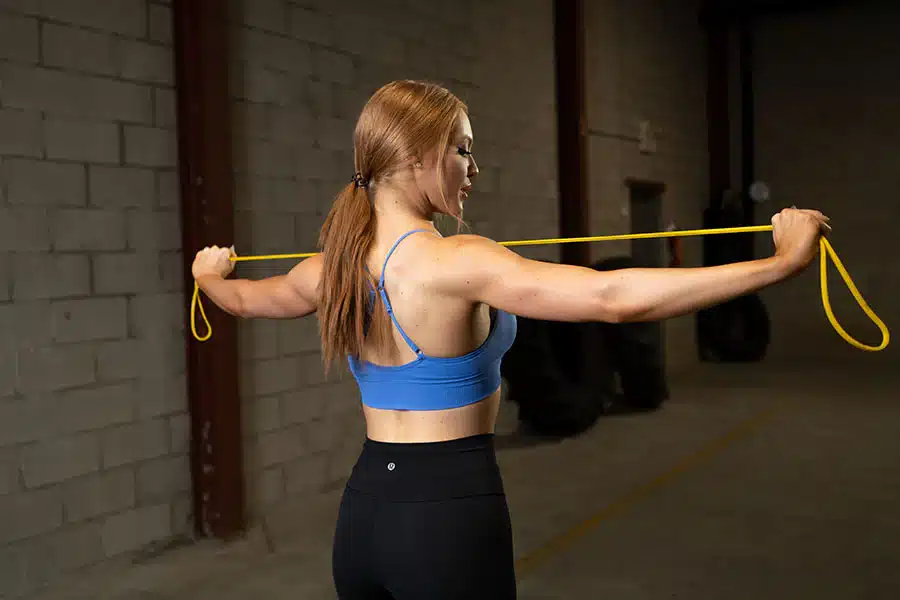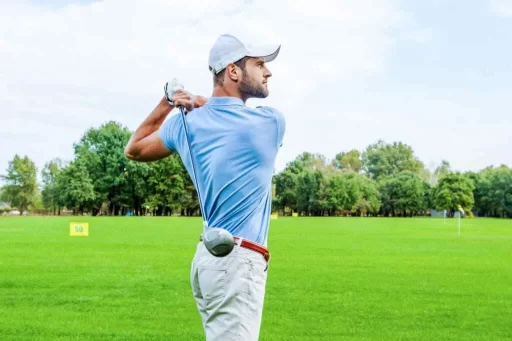Folks, let’s admit that any game involving physical exertion needs physical fitness. If you are new to any game, let’s say golf, and are trying to learn it, but you feel like there’s something wrong with your movements. Don’t get disappointed, though; it’s just that playing golf requires several rotational and twisted movements. So, if your body isn’t flexible, it can be problematic, and you can overcome that with some exercise. Whether you are learning birdie golf or mulligan golf, physical fitness and muscle flexibility are all you need to be a pro. So, in this article guide, we will cover the nuances and intricacies of golf exercises so you can improve your game.
A Guide to Golf Exercises
Playing golf requires a combination of talent and physical fitness. As vital as it is to refine your swing, you should also concentrate on conditioning your body to improve your performance on the course. We’ll go over seven key golf exercises in this comprehensive guide, each of which will improve your game by focusing on a distinct physical fitness component.
Golf fitness is an athletic preparation and just like a workout program that takes you one step closer to being a pro at this masterpiece game with strategic brilliance. You can either practice these exercises at the gym or even on your own.

1. Core Rotations as Ideal Golf Exercises
Are you looking for some easy exercises that make you physically flexible? Well, let’s have a look at the core rotations. A strong and controlled golf swing requires strength training through core rotations. Core rotations help you develop force and stability during your swing by focusing on your lower back, obliques, and abdomen muscles.
- Hold a medicine ball with both hands while standing with your feet shoulder-width apart to complete core rotations.
- Keep your knees slightly bent and contract your core muscles.
- While maintaining a solid hip position, rotate your torso first to the left and then to the right.
- Focus on controlled movement and maintaining appropriate form throughout. Aim for 10 to 15 revolutions on each side. This is one of the first steps to being a golf fit person.

2. Hip Flexor Stretches
The next thing that comes after learning the core rotations in a golf-specific workout is hip stretches. To achieve a full range of motion in your swing and avoid injuries, it’s important to up your game with flexible hip flexors. Your hip rotation can be restricted by tight hip flexors, which can cause compensatory movements that alter your swing mechanics.
To stretch your hip flexors:
- Place your other foot flat on the ground in front of you and bend down on one knee.
- Lean forward slightly while maintaining a straight back to stretch the hip flexor of the leg that is kneeling.
- After 20 to 30 seconds, hold the stretch and go on to the other leg.
- To improve the stretch, repeat the pose two to three times on each side, paying close attention to your deep, controlled breathing.

3. Glute Bridges in Golf Exercises List
The best golf workouts entail easy-to-follow exercises such as glute bridges. Glute strength training is crucial for stability and power production during your swing. Glute bridges focus on your hamstrings, lower back, and gluteal muscles, assisting you in maintaining good posture and balance throughout your swing. To complete glute bridges, lie on your back with your knees bent and your feet flat on the floor, hip-width apart.
- Press your heels into the ground while using your core muscles.
- Squeeze your glutes at the peak of the movement as you raise your hips toward the ceiling.
- Controllably return your hips to the starting position.
- To maximum muscle activation, aim for 10 to 15 repetitions while concentrating on a steady, intentional motion pattern.

4. Shoulder Rotations In Golf Exercises Bucket List
You can get ideal muscle strength by practicing rigorous shoulder rotations. These exercises are specifically meant to improve your ability to hold the club in a better way. Shoulder mobility is essential to achieve a fluid and smooth golf swing speed. By focusing on the muscles that surround the shoulder joint, shoulder rotations increase the range of motion and lower the chance of injury.
- Stand with your feet shoulder-width apart and your arms relaxed at your sides to begin performing shoulder rotations.
- Gently move your shoulders in a circular motion, moving them forward and backward.
- Pay attention to maintaining steady, fluid motions; steer clear of any jerky or sudden ones.
- Try to complete 10 to 15 rotations in each direction.
- As your muscles relax, progressively extend your range of motion. Believe me, it is one of the best exercises for golf.

5. Lateral Lunges in Golf Exercises
Golf training lateral lunges enhance the strength, stability, and mobility of the lower body—all essential for a balanced golf swing. By working your quadriceps, hamstrings, glutes, and adductors, lateral lunges help you maintain adequate weight transfer and balance throughout your swing.
- Place your hands on your hips and stand with your feet together to execute a lateral lunge.
- With your left foot firmly on the ground, take a broad step to the side with your right foot.
- Holding your left leg straight, flex your right knee, and bring your body down to the floor.
- Repeat on the other side after pushing off with your right foot to return to the starting position.
- Try to complete 10–12 repetitions on each side, paying close attention to your form and control the entire time.

6. Rotator Cuff Exercises
Golf enthusiasts know that golf fitness programs will make your muscles more flexible. To stabilize the shoulder joint during the golf swing, it is crucial to build strength in the rotator cuff muscles. Exercises for the rotator cuff focus on the teres minor, subscapularis, supraspinatus, and infraspinatus muscles.
- When performing rotator cuff exercises, begin with a light dumbbell or resistance band and work your way up to a higher resistance as your strength increases.
- Carry out exercises like side-lying external rotations, prone horizontal abduction, and internal and external rotations.
- To prevent strain or injury, try for 2-3 sets of 10-15 repetitions for every workout, paying close attention to controlled movement and appropriate form.

7. Balance Training in Golf Exercises
Maintaining your balance and efficiently transferring power during your swing depends on having a good balance. Exercises for balance training test your proprioception and stability, which will improve your control and coordination while playing the course. Include balancing exercises like these:
- Single-leg stands: Bend your knee slightly while standing on one leg, then hold the posture for 30 to 60 seconds before moving to the other leg.
- Balance board or Bosu ball exercises: To test your balance and stability, stand on a balance board or Bosu ball with your feet hip-width apart and execute a variety of movements like squats, lunges, and rotations.
- Pilates or yoga: Include Pilates or yoga poses in your training regimen to upgrade your game. These poses will help you develop your strength, flexibility, and balance, all of which are necessary for a complete golf swing.
These are some of the best golf exercises that you can try out to bring the best out of you as a pro player. However, you can also look for some weight training and others and practice them any time of the year to hit the ball with more precision. Practice these exercises, get yourself best-fitted golf hats, a great kit to rock your game.
You can check out ways to perfect your golf swing in this article.
Conclusion
Wrapping up, the article covered 7 top rates of exercises for golf training. If you are worried that your shots aren’t your best, just focus on these exercises on a regular basis and thank us later. From shoulder rotations to glute bridges, each exercise will strengthen your muscles enough to be the best at your game. So, try these out and become a pro.
Train Your Muscles!







